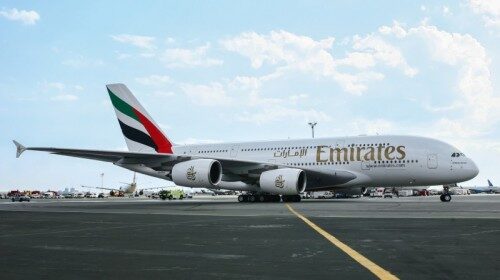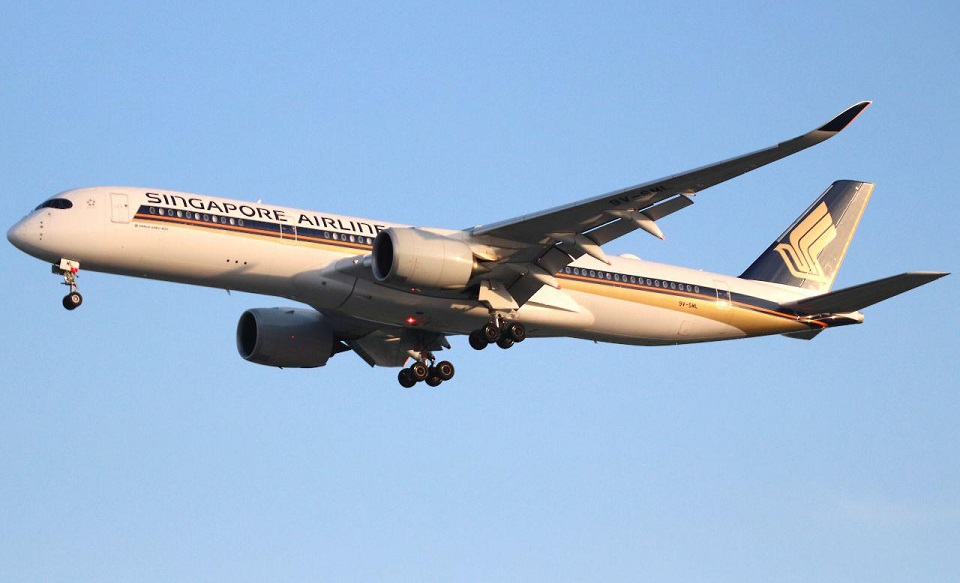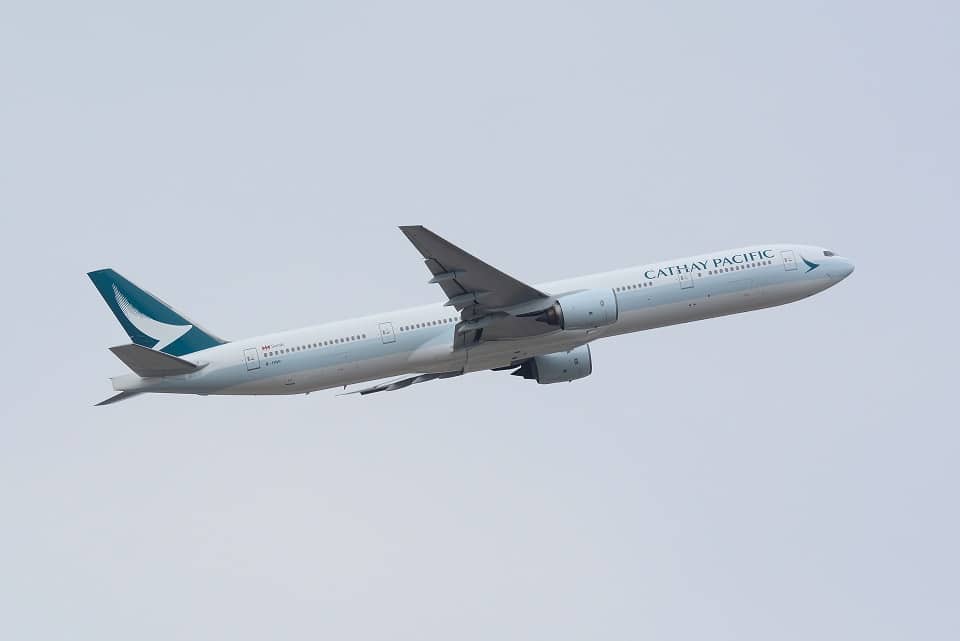Airlines
world’s largest passenger airline, Airbus A380 made a rare landing in Sri Lanka

In order to refuel, the Emirates Airbus A380 flight that was travelling from Auckland, New Zealand to Dubai made an early morning landing at Bandaranaike International Airport (BIA). The arrival of the plane at the BIA was greeted by airport representatives. The plane’s passengers did not depart while it was being refuelled.
According to reports, the Aircraft A380 received 62,800 litres of Jet A-1 type fuel worth Rs. 16.8 million from the Ceylon Petroleum Corporation store at the BIA.
Russia’s Aeroflot resumes flights to Sri Lanka(Opens in a new browser tab)
Sri Lanka last received an Airbus A380 in 2019. The BIA’s runway underwent renovation in 2017 to accommodate Airbus A380 aircraft.
In case of a delay in landing owing to foggy weather prevailing in the area of the Dubai airport, the pilots of this jet had made the decision to refuel while en route to Dubai. The refuelling process took around an hour and forty minutes, and at 4:50 am , the plane departed for Dubai from Katunayake airport.
First retrofitted Emirates A380 enters service(Opens in a new browser tab)
Emirates A380 remains the most talked-about passenger aircraft in the world today. And it is the world’s largest A380 operator. In 2023 Emirates’A380 features the latest products and interiors across all cabins. Including 56 Premium Economy class seats on the main deck, and new colour palettes evident in the carpeting and wall panels. On the upper deck, First and Business Class seats sport Emirates’ latest cream-coloured leather upholstery and lighter-toned wood finishing, similar to the airline’s ‘game changer’ product. Emirates’ signature ghaf tree motif also features prominently throughout the interiors, including hand-stencilled panels in the First Class Shower Spa.

Airlines
Singapore Airlines Ordered to Pay $3,580 to Couple over Faulty Seats

Following a dispute over defective seats during their voyage from India to Australia last year, Singapore Airlines (SIA) has been compelled to pay a sum exceeding S$3,500 to an Indian couple.
The District Consumer Disputes Redressal Commission in Hyderabad ruled in favour of Ravi and Anjali Gupta, who on May 23, 2023, had problems with their business class seats that were meant to automatically recline on their flight from Hyderabad to Australia via Singapore.
Reports from media outlets in India highlighted the discomfort experienced by the couple, who were compelled to endure the entire journey without the benefit of reclining seats, despite having paid a significant amount which cost around 66,750 rupees (S$1,090) for each ticket, lodged a complaint during the flight, expressing their dissatisfaction with the situation.
Singapore Airlines initially offered compensation in the form of 10,000 KrisFlyer miles per person, which was declined by the passengers. As reported by CNA, Singapore Airlines apologised for any difficulty the technical failure may have caused and acknowledged the District Consumer Disputes Redressal Commission of Hyderabad’s ruling.
SIA clarified that while the automatic recline feature on Mr. and Mrs. Gupta’s seats experienced a glitch, the manual recline function remained operational during the flight from Hyderabad to Singapore.
Regrettably, due to a fully occupied flight, SIA staff were unable to arrange alternative seating within the business class cabin. However, the airline asserts that its crew diligently monitored the couple’s comfort throughout the journey, offering to manually adjust the seats as needed.
Airlines
Cathay Pacific asks business class customers to bring their own cutlery

In an innovative move towards sustainability, renowned Hong Kong carrier Cathay Pacific has recently floated an unconventional idea to its business class customers.
Bringing their own cutlery sets onboard. This initiative, revealed through a member survey circulated within the airline’s “Cathay Lab” community – a platform comprising frequent business class travelers – has stirred a wave of curiosity within the aviation industry.
With sustainability becoming an increasing concern in aviation, Cathay Pacific’s survey aimed to gauge passengers‘ willingness to partake in various eco-friendly practices during their journeys.
Among the initiatives presented, including refilling reusable water bottles and recycling plastic, the prospect of bringing personal cutlery garnered significant attention. Some members expressed practical concerns, questioning the feasibility of carrying cutlery through airport security and the potential inconvenience for passengers unaware of regulations.
Others suggested that Cathay Pacific should simply provide reusable cutlery onboard instead. Furthermore, there were suspicions among some respondents that the BYO cutlery proposal might be a precursor to introducing additional charges, with one user humorously envisioning a scenario where the airline lends cutlery sets for a fee.
Despite the skepticism surrounding the proposal, Cathay Pacific’s exploration of innovative sustainability measures reflects a broader industry trend towards environmental consciousness.
Airlines
Air India and IndiGo’s Joint Initiative, Plans for 170 Wide-Body Aircraft

In a bold move that underscores their confidence in India’s burgeoning aviation sector, Air India and IndiGo have revealed ambitious plans to acquire a combined total of up to 170 wide-body aircraft.
This strategic investment marks a significant shift in the country’s aviation landscape, as it brings European aircraft manufacturer Airbus into a domain traditionally dominated by American giant Boeing.
With India positioned as one of the world’s fastest-growing aviation markets, the timing couldn’t be more opportune for such expansion endeavors. The aim is clear: to elevate India’s status as a global aviation hub by enhancing connectivity through direct flights between Indian cities and international destinations.
Currently, a substantial portion of India’s international air traffic relies on overseas hubs, particularly in the Gulf region. IndiGo’s announcement of firm orders for 30 A350-900 aircraft, with an option for an additional 70, signals its commitment to capturing a larger share of the long-haul market.
Meanwhile, Air India’s comprehensive order, unveiled last year, encompasses 70 wide-body planes, including a mix of A350 and Boeing 787 models.
Recognizing the potential for disruption in the long and ultra-long haul segments, aviation consultancy CAPA India has emphasized the pivotal role Indian carriers can play in driving innovation and transformation.
With the current combined fleet size of Indian airlines exceeding 700 aircraft, the stage is set for Air India and IndiGo to spearhead a new era of growth and connectivity in the Indian aviation sector.






















